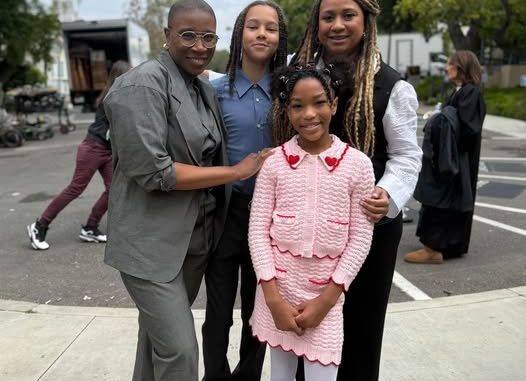
Hey there! Remember the early days of 9-1-1? The clunky landlines, the operator on the other end, the wait … well, things have shifted quite a bit. But here’s the twist: despite all those shiny upgrades, some core truths never fade. Let’s take a walk through time and tech, and see how 9-1-1 has evolved—but how it still stays true at heart.
How 9-1-1 Started – The Early Days
Birth of an Emergency System
Back in the late 1960s, 9-1-1 launched as a quick way to reach help. Communities needed a unified number, and boom—9-1-1 was born.
Rotary Phones and Operator Hands
Imagine dialing 9-1-1 on a rotary phone—waiting for the dial to spin back, fingers aching. That’s how emergencies felt then. Operator voices guided every step.
The Tech Revolution in 9-1-1
From Copper Wires to VoIP
When calls travelled through copper wires, location pinpointing wasn’t precise. Now, with Voice over IP (VoIP), location data’s sharper—but not perfect yet.
Wireless and Mobile Integration
Cell phones changed the game. Suddenly, help could trace approximate locations while you’re stuck on a highway or lost in the woods.
Text-to-9-1-1 and Visual Inputs
Did you think we’d only rely on voice? Nope! Text messaging, picture sending, even live video feeds—these modern tools are stepping into emergency calls, making responses faster and clearer.
The Human Thread That Never Breaks
Compassion on the Other End
Despite tech leaps, there’s still a human voice when you call. That calm, patient, guiding voice? That hasn’t changed—and that’s the heart of 9-1-1.
Training That’s Still Grounded in Empathy
Call-takers get training in tech—but also in emotional support. Their ability to keep you calm in chaos? That’s timeless.
Why Some Things Don’t—And Shouldn’t—Change
Reliability is Sacred
We can’t have 9-1-1 go offline. When seconds matter, the system must work, no questions asked.
Human Connection Saves Lives
Algorithms are cool—but when you’re panicked, you want a voice. Someone to guide you, reassure you, tell you you’re not alone.
Real-Life Stories That Prove It
A Text Saved a Life
A teenager couldn’t speak safely—she texted 9-1-1 instead. That text triggered swift help and a safe outcome. More proof: new tools can make a difference while that human voice still warms the line.
The Operator Who Made the Difference
A frantic caller didn’t know their location—but a calm call-taker coaxed details out, stayed on the line, and managed to save precious minutes. That human patience—it’s unshakable.
Challenges Still Loom
Tech Gaps in Rural Areas
Ever tried 9-1-1 in a spot with bad service? Texts don’t go through, GPS lags—technology still stumbles sometimes.
Training vs. Burnout
The emotional labor on dispatchers is intense. Improving tech helps—but investing in their wellbeing is vital to keep that human thread alive.
Where Are We Headed?
Smarter Location Identification
Next-gen 9-1-1 (NG9-1-1) promises better tools—precise maps, automatic location data, even wearable signals helping responders reach you faster.
Smart Homes and IoT Alerts
Imagine your smart smoke detector triggering a 9-1-1 call with real-time video of your living room. The future’s edging closer every day.
AI-Assisted Response … With a Human Final Word
Artificial intelligence may help filter and prioritize, but when chaos reigns, you’ll still hear a calm human voice guiding you.
Balancing Innovation with Humanity
Tech as an Assistant, Not Replacement
Think of tech as a super-smart sidekick—it fetches, it monitors—but it’s still a human who takes the call, listens, assists.
Continuous Training on Both Fronts
Next-gen tools require next-gen training. Dispatchers aren’t just voice guides—they’re tech-savvy navigators of emergencies.
What Can Communities Do?
Raise Awareness of New Tools
Let people know you can text, send pics, even livestream if needed.
Support Dispatcher Wellbeing
Because that human voice matters, local governments and communities must invest in mental health, training, and support for dispatchers.
Advocate for Infrastructure Investment
Better broadband in rural areas, updated systems in cities—it all helps 9-1-1 be faster, smarter, stronger.
Conclusion
9-1-1 has certainly come a long way—from rotary phones and operator whispers to texts, videos, and GPS. Yet, what hasn’t changed—and hopefully never will—is that steady human voice on the line, offering help, calm, and assurance in your most vulnerable moment. Tech evolves, tools upgrade—but that core of compassion, reliability, and human connection? That’s forever.

5 Unique FAQs
Q1: Can I really text 9-1-1 if I can’t speak?
Yes—many regions now support Text-to-9-1-1, allowing silent callers to send text messages when speaking isn’t safe. It’s a great lifeline.
Q2: Is my location always accurate when calling 9-1-1 from a cell phone?
Not always—it depends on network strength, device type, and infrastructure. Next-Gen 9-1-1 aims to improve location accuracy significantly.
Q3: Will artificial intelligence ever replace human dispatchers?
Not entirely. AI may assist by filtering calls or providing data, but empathy, judgment, and emotional support remain firmly in the human domain.
Q4: What should I do if I’m in a rural area with poor service?
Try to move to a spot with better reception if possible, and as a community, advocate for improved infrastructure so emergency systems work everywhere.
Q5: How can I support my local 9-1-1 dispatchers?
Spread awareness of new emergency tools, donate or advocate for resources that support their training and mental health, and share stories of tech-human balance to build empathy.
